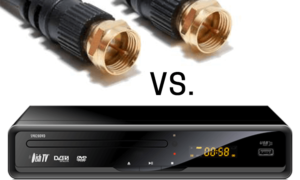A new report suggests a link between poliovirus and wastewater near New York City. New York officials are stressing the importance of polio vaccinations. The primary series of three vaccines protects most Americans against polio, but unvaccinated and under-vaccinated individuals are still at risk.
Detection of poliovirus in Rockland County
New York State officials have discovered poliovirus in wastewater in Orange, Rockland, and Sullivan counties. They have declared a state disaster and are allowing medical professionals to administer polio vaccines to EMS workers, give standing orders for polio vaccines, and encourage the public to get immunized. The statewide vaccination rate for polio is 79%, but there are still counties with lower rates.
The polio virus is difficult to eradicate. While many people do not develop symptoms of the disease, others may develop paralysis, including their legs or arms. In the United States, there is no oral polio vaccine, and the virus can mutate and produce a more dangerous version. This is why the state health department is aggressively assessing the risks and the spread of the disease. Though polio is not treatable, it is preventable. The state health department is urging people to get immunized against polio virus, a deadly disease that can kill a child within days.
State and city health officials said Wednesday that the findings of the poliovirus in wastewater near New York City are alarming but not unexpected. The virus has been found in wastewater in counties 30 miles north of New York City, suggesting a local spread. The CDC and state health department will continue to monitor the local water supply for the virus and recommend the appropriate vaccine for the population.
- Also Read: First Day in More Than 70 Years Without Its Queen Country Mourns!
- Also Read: Beauty and the Beast Prequel About to Happen Says Luke Evans Know Details!
Detection of poliovirus in sewage samples in London
A sewage sample from London has tested positive for the poliovirus, the virus that causes poliomyelitis. The polio virus is a highly infectious disease that is spread through contact with infected people. A polio vaccine is an important part of a child’s vaccination schedule. The inactivated form of the polio vaccine contains the dead virus and is therefore safe for children. Detection of the virus in sewage is a major cause for concern and has prompted health authorities to carry out an urgent investigation.
The poliovirus was detected in sewage samples from London’s Beckton Sewage Treatment Works, which treats wastewater from about four million people. The detection was made possible by sewage surveillance, which is essential for early detection of pathogens and preventing their onward spread. The poliovirus is shed in feces, and this means that monitoring sewage is important.
The poliovirus found in the samples was the type 2 vaccine-derived poliovirus. The vaccine-derived poliovirus (VDPV2) has an evolutionary pattern and is often found in sewage. This virus can cause severe illness in the unvaccinated and is an emerging health risk. The National Health Service is now offering booster doses of the inactivated vaccine in London to prevent the spread of the disease. Children living in the affected areas are especially encouraged to get vaccinated against polio.
A public health team in London has confirmed the finding of VDPV2. The polio vaccine has made the polio virus nearly extinct in the UK, but it has remained a major cause of public health concerns. A vaccine that contains both types of vaccines will protect against polio.
Live oral polio vaccine hasn’t been administered in the UK since 2004. In addition to sewage samples, the vaccine-derived virus could be transmitted to others. It could mutate and cause “vaccine-derived” polio, which is not as severe as the wild polio virus but can cause serious illness and sometimes even paralysis if it infects people who have never been vaccinated.
A large number of countries are using sewage monitoring to detect diseases in sewage samples. In the United States, the National Wastewater Surveillance System allows officials to trace the spread of diseases like SARS-CoV-2 and COVID-19. This method allows officials to pinpoint the origins of outbreaks and develop vaccination campaigns.
Genetic link between poliovirus and poliovirus in Israel
In the late 1990s, Israel started to see outbreaks of poliovirus. The first positive samples came from Qualquilya in the West Bank, and subsequent outbreaks occurred in Ashdod and Raffah, two Jewish cities near the Gaza Strip. In December 1996, wild-type poliovirus type 1 was isolated from a sewage sample in Raffah. During the following decade, four clusters of virus isolations occurred in Israel.
In 2022, the Ministry of Health in Israel announced the emergence of new cases of poliovirus in the city of Jerusalem. An unvaccinated child was diagnosed with acute flaccid paralysis, and stool testing confirmed poliovirus infection. Genetic studies showed that the virus isolated from the patient had genetic similarities to circulating VDPV3-strains. This case prompted the reclassification of Israeli and Palestinian environmental samples as circulating VDPV3.
The environmental surveillance system in Israel has detected previous events of non-sustained cross-border reintroduction of wild poliovirus into Israel. In addition, the environmental surveillance system in Israel has detected individuals excreting vaccine-derived poliovirus in urban settings. These data demonstrate that the environmental surveillance system is effective and practicable in detecting poliovirus.
The latest findings of genetic link between poliovirus and polivirus in Israel are the first to confirm a causal relationship. These viruses were originally isolated from faecal samples of AFP patients. The viral strains were then classified using viral cultures, intratypic differentiation methods, and nucleic acid sequencing of the entire VP1 region of the poliovirus genome.
The outbreaks in Israel are thought to be separate episodes, with two outbreaks lasting from 1994 to 1995. These outbreaks were preceded by outbreaks of the 1988 strain, and the population was sufficiently immune against the wild-type virus during the 1990s. The outbreaks occurred during this time, as the country received large numbers of Palestinians returning from endemic areas. Consequently, the amount of circulating virus in the population is high. Moreover, samples of positive cases contain large numbers of plaques.
Phylogenetic analysis of wild-type poliovirus strains in Israel and the United States revealed that several genetically distinct strains are transmitted within Israel and the U.S., with the SOAS strain indigenous to the region. The data also revealed multiple chains of transmission, indicating the existence of multiple orphan circulations.
- Also Read: Who Succeeds Queen Elizabeth II? Who Is Next In Line To The Throne!
- Also Read: Power Xl Duo Nutri Sealer Complete Details!
Impact of poliovirus on vaccination rates in New York City
The oral polio vaccine is a highly effective way to prevent paralysis caused by the poliovirus. This vaccine contains live, but weakened versions of all three poliovirus strains. It stimulates the body to develop robust immunity against the disease.
The polio virus can still spread in areas where vaccination rates are low. But fortunately, polio disease is largely eradicated in the U.S. thanks to aggressive vaccine campaigns. Vaccination campaigns have greatly reduced the risk of catching the disease in developed countries. However, in countries like New York where the vaccination rates are declining, the disease still finds a willing audience.
New York State health officials are urging people to get the polio vaccine, which protects against the disease. However, they are concerned about how the disease will impact vaccination rates. In recent years, there have been reports of a polio outbreak in the city. Although it has been decades since polio was declared eradicated in the U.S., the recent outbreak in New York City has raised some alarm bells.
After New York State health officials found the virus in a wastewater sample, they decided to launch an investigation into its origin. It turned out to be a rare case, but the presence of poliovirus suggests that the disease may be spreading locally. According to New York State Health Commissioner, the discovery is alarming. The state is working to improve vaccination rates in the city.
The virus can cause paralysis in people if not treated in time. It is highly infectious and spreads via contact with infected people. It can also be spread via contaminated water and food. It replicates in the intestine and can invade the nervous system, leading to paralysis in some cases.
Poliovirus outbreaks are occurring globally. It is important to get up-to-date vaccinations before traveling. Even adults who had the polio vaccine as a child should have a one-time booster if they plan to travel to an area where poliovirus is spreading. NYCDOHMH is working closely with community organizations to raise vaccination rates. It has also developed educational materials for local media outlets.
ALBANY, N.Y. — New York Gov. Kathy Hochul said Friday the state was moving forward its polio-battling endeavors as the infection that causes the dangerous illness was distinguished in the wastewater of one more district in the New York City region.
Wellbeing authorities started checking for indications of the infection in sewage water after the main instance of polio in the United States in almost 10 years was distinguished in July in Rockland County, which is north of the city. The most recent location included a wastewater test gathered last month in Nassau County on Long Island, straightforwardly east of the city.
The example is hereditarily connected to the polio case from Rockland and gives additional proof of extending local area spread, state wellbeing authorities said. The poliovirus had recently been distinguished in wastewater in New York City and three provinces to its north: Rockland, Orange and Sullivan.
Hochul proclaimed a state debacle crisis that permits EMS laborers, birthing specialists and drug specialists to regulate polio immunizations and permits specialists to give standing requests for the immunization. Information on inoculations will be utilized to concentrate immunization endeavors where they’re required the most.
“On polio, we basically can’t toss the dice,” state Health Commissioner Dr. Mary T. Bassett said in a pre-arranged proclamation. “In the event that you or your kid are unvaccinated or not in the know regarding immunizations, the gamble of immobile illness is genuine. I encourage New Yorkers to not acknowledge any gamble whatsoever.”
Wellbeing authorities said all unvaccinated New York occupants — including kids by 2 months old enough, pregnant individuals and the people who haven’t finished their antibody series — ought to get vaccinated right away. They likewise encouraged supporters for specific individuals, for example, medical care laborers in impacted regions who treat patients who could have polio.
The statewide polio inoculation rate is 79%, however the regions of Rockland, Orange and Sullivan had lower rates.
Authorities have said that it is conceivable that many individuals in the state have gotten polio and don’t have any acquaintance with it. A great many people contaminated with polio have no side effects except for can in any case give the infection to others for days or weeks.
The solitary affirmed case in New York included a unidentified youthful grown-up who was unvaccinated.















